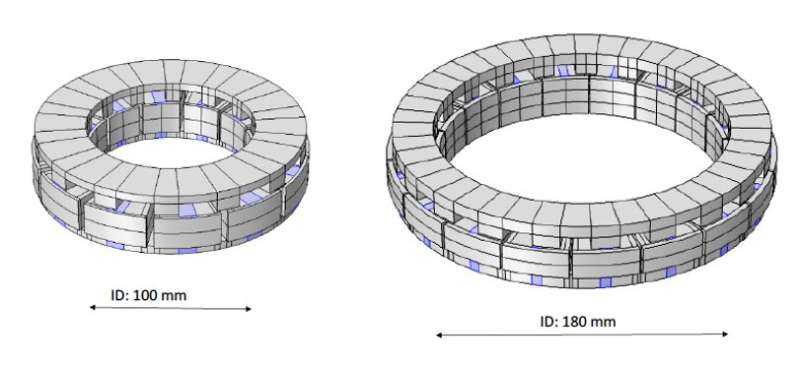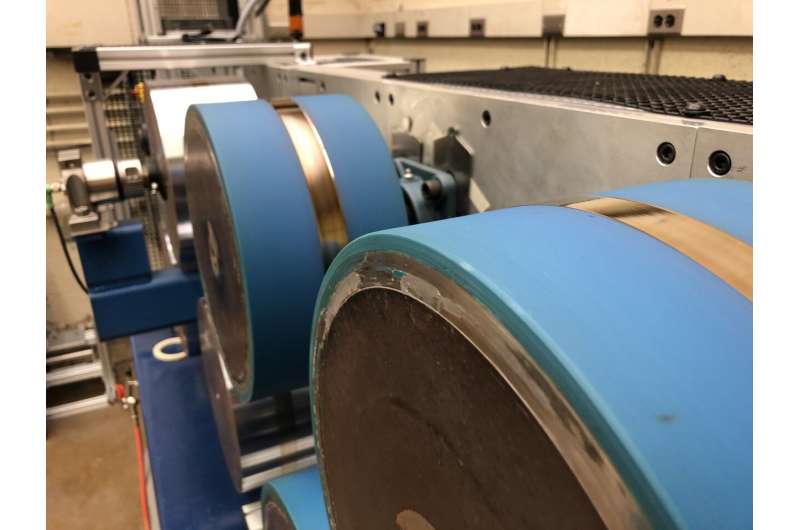Powering sea to space

Magnetic materials pose major limitations in power electronic applications at high frequencies, but MSE Professor Michael McHenry and alums Paul Ohodnicki, Alex Leary and Sam Kernion have made advancements on materials and their processing that can greatly increase motor and transformer efficiencies.
Power electronics, like motors, gain power through speed. The speed, however, requires the magnetic materials to switch at a higher frequency and this causes magnetic (eddy current) loss. Magnetic losses put off heat and that heat limits the motor’s overall performance. So, reducing magnetic loss is pivotal in paving the way for smaller motors with higher power.
Extended off of McHenry’s award-winning research using cobalt-based metal amorphous nanocomposite (MANC) materials, McHenry’s team found that strain annealing soft magnetic amorphous ribbons under tension and then reannealing can lead to as much as a 50% magnetic loss reduction in their newly patented Iron-Nickel-based MANCs. This loss reduction allows higher power densities to be achieved in their alloys, putting them in line with the commercially available FINEMET alloy but with one key advantage—the team’s alloy is nonbrittle and therefore a more attractive material for high-speed motor applications.
Funded by the Department of Energy’s Advanced Manufacturing Office, McHenry’s team in collaboration with National Energy Technology Laboratory (NETL), NASA Glenn Research Center, and North Carolina State University has built a 2.5-kilowatt motor prototype combining rare-earth free permanent magnets with MANCs. The commercialization of this motor could decrease the size and weight of standard vacuum cleaners, lawnmowers, and other household appliances.

McHenry’s team is now looking to build higher power motors as they observed even greater magnetic loss reduction in larger radius magnetic cores—those relevant to motor vehicle technologies. With this application, McHenry’s alloys could one day be used in Naval submarines or NASA spaceships. With costs as high as $10,000/pound to put material into space, reducing the size of a motor while maintaining comparable power would have a drastic impact.
McHenry’s team will be able to process their alloys on a commercial scale at their Pittsburgh-based startup, CorePower Magnetics to bring their high-performance power electronic components to market.
Citation:
Powering sea to space (2021, September 14)
retrieved 14 September 2021
from https://techxplore.com/news/2021-09-powering-sea-space.html
This document is subject to copyright. Apart from any fair dealing for the purpose of private study or research, no
part may be reproduced without the written permission. The content is provided for information purposes only.
For all the latest Technology News Click Here
For the latest news and updates, follow us on Google News.

